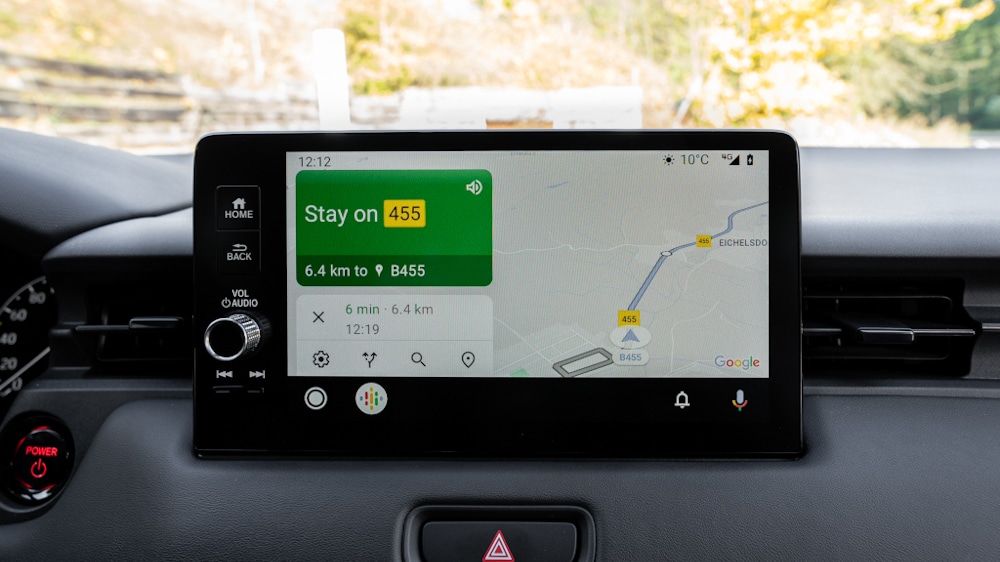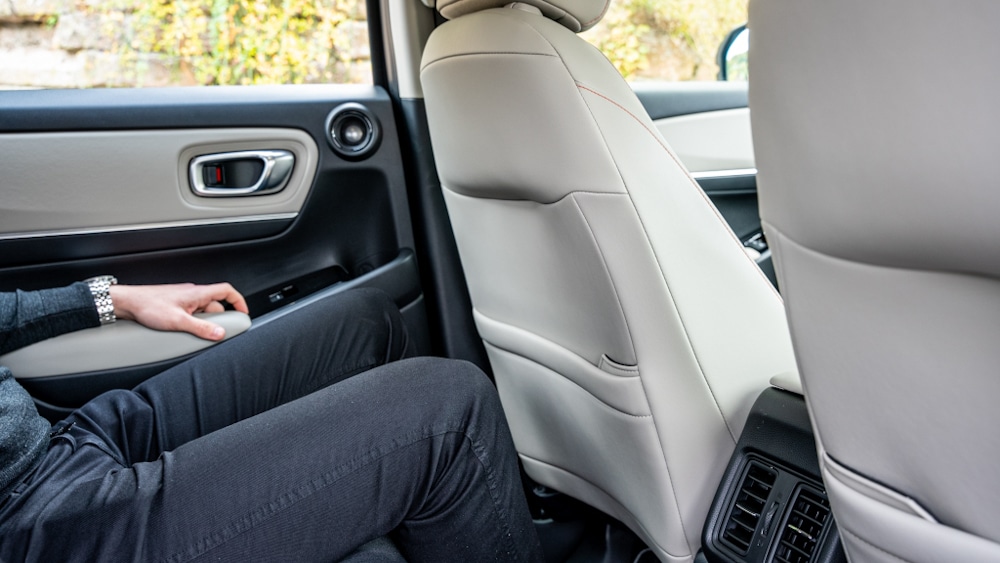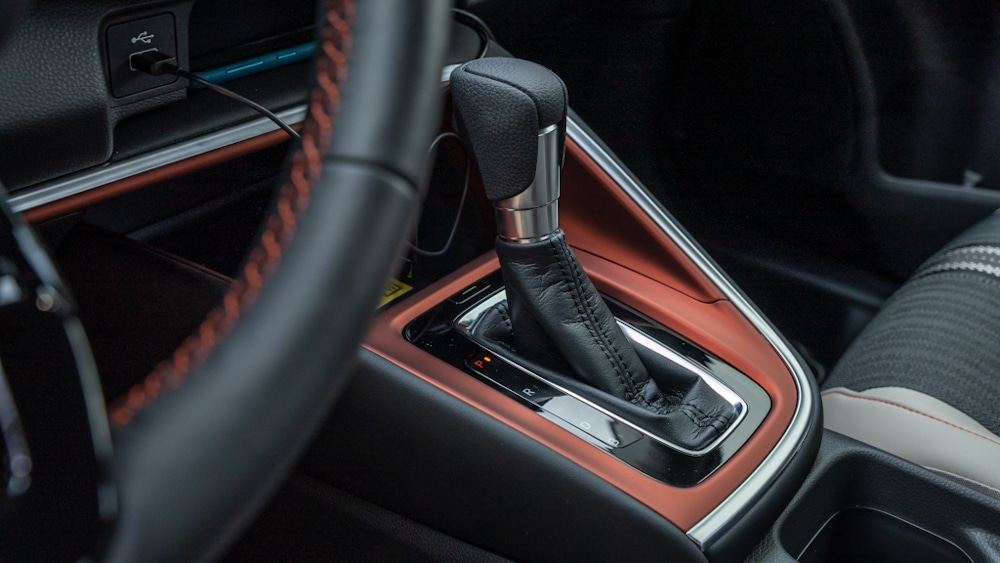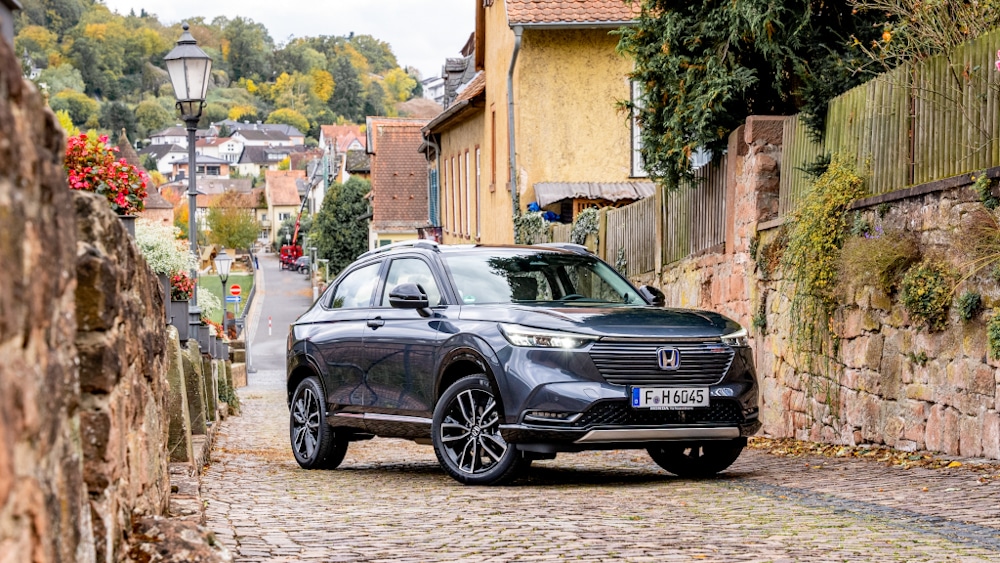We took a quick test drive in the German countryside to get our first glimpse of the new Honda HR-V. While the name and exterior dimensions remain unchanged, the new HR-V has had virtually everything redone. In keeping with the electrification era, the HR-V is in a state of flux, as the new HR-V is only available as a hybrid with Honda’s e:HEV technology.
Interior – Magic Seats and a functional media system
Depending on the trim level, of which there are three, the interior is available with dark cloth upholstery and a dark or light synthetic leather and cloth combination. In the test cars, the seats were a combination of leather and fabric, providing a firm and comfortable seating position, where a little more side support in corners would have been welcome.

The differences in equipment between trim levels are quite small. Starting from the prices, the Elegance trim level lacks mainly comfort features such as a heated steering wheel and the higher trim levels lack dual-zone automatic climate control.
Safety features are not compromised at the trim levels. Only the blind spot warning with cross-traffic function has been omitted from the most affordable Elegance trim level. All HR-V models offer the Honda Sensing safety package, which now includes a front collision warning system that responds to motorcyclists and cyclists in addition to many safety features.

Magic Seats, as the name suggests, work wonders in the HR-V’s size class. Magic Seats are nothing new in the Honda world, but to the uninformed, the versatility of the seats will come as a surprise.
Placing the fuel tank under the front seats allows the rear seats to be raised to a fully upright position, or the seats to be folded down so that the boot floor is completely flat. Rear legroom has increased by 35 mm compared to the previous model, which is significant in this size class.
With the rear seats upright, space is freed up to carry large items such as bicycles, large televisions or pets. For a car of its size, there is an exceptional amount of space in terms of depth and height. No more struggling to squeeze a large TV into the boot of an electronics store car park.

While the interior design is, if we may say so, dated, the HR-V’s cabin has a lot to offer in terms of functionality. The central media display responds exceptionally quickly to selections and, in terms of usability, the screen content has been kept simple and highly functional.
The innovative nature of the media systems is also reflected in the fact that the car can share Wi-Fi connectivity with passengers in the same way as a standard router, and Android Auto navigation instructions are also displayed on the instrument panel.
The design of the cockpit has been strongly influenced by the physical controls, and the design has gone beyond practicality.
Design – lower than its predecessor, almost coupé-like
The height has been dropped by two centimetres compared to the previous model and, combined with a centimetre increase in ground clearance, low windows and a lowered roofline, the new HR-V is a massively distinctive coupé SUV. Styling is enhanced by a body-coloured grille at the front, two-piece bodywork and rear door handles set into the rear pillars.
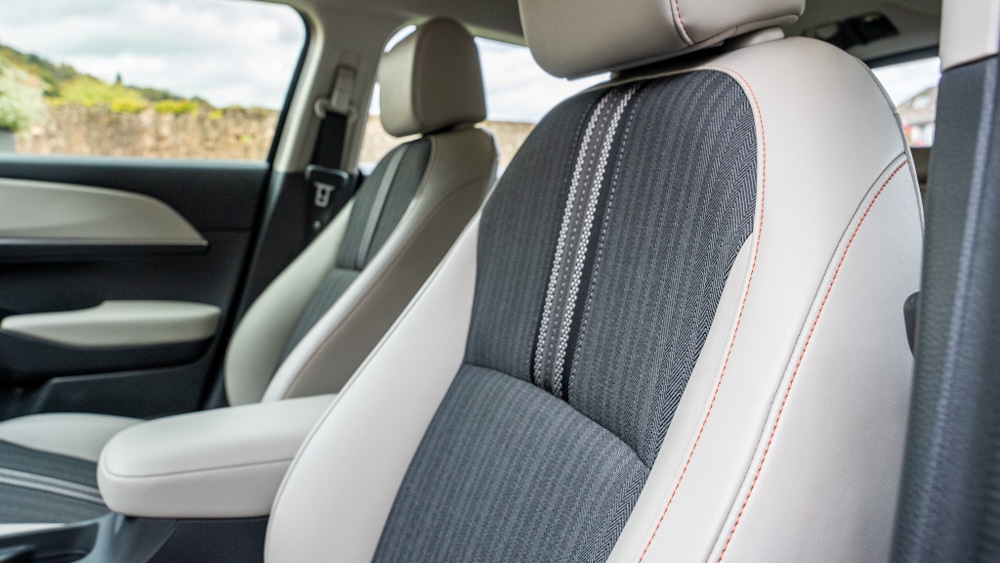
Despite its coupe-like design and low windows, outward visibility is very good. The A-pillar between the windscreen and the front windows is narrow, which significantly improves visibility out of the cabin. Visibility is also enhanced by the large mirrors and the higher seat height of the SUV.
The front grille now comes standard on the HR-V in body colour, giving the front of the car a sleeker and more finished look. Seen from a distance, the almost closed front grille is in keeping with the electrification era, i.e. body-coloured. A more traditional black front grille is also available as an option.
At the rear, the rear lights are subtle, but the design is subtle, with the lights running from side to side, giving the rear of the car a wider and lower appearance.
Drivability – a smooth ride with no surprises
Driving conditions were favourable on the test day in Germany on good road surfaces in hilly countryside. The main thing that struck me about the handling was the smooth ride at highway speeds and the rather stiff bodywork.
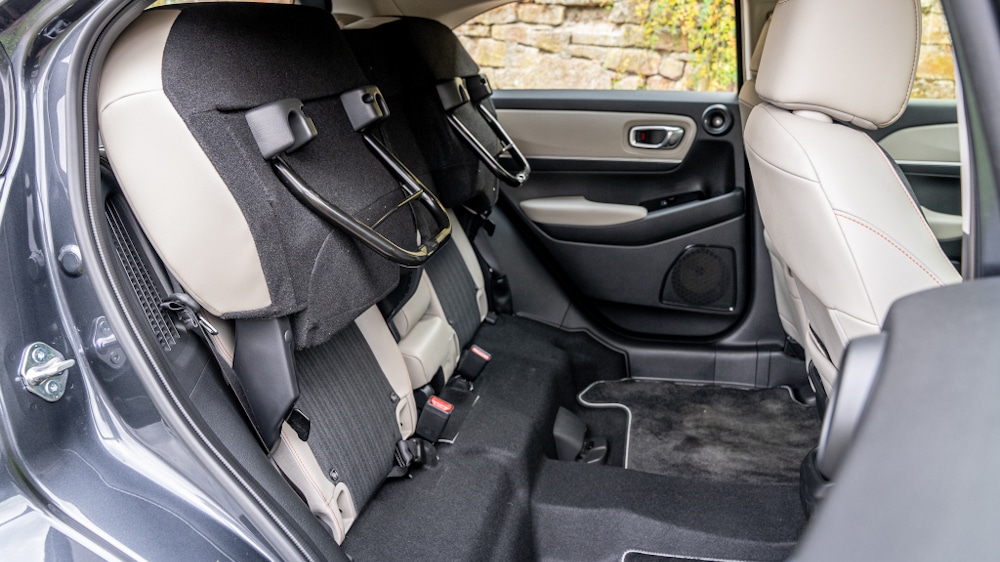
The chassis is comfort-oriented, but there is also a sense of snappiness. The steering feel has not been taken too far in the sporty direction, and the car as a whole is easy and unsurprising to drive – for better or worse.
The chassis is at its best in city and highway driving. At higher speeds on the motorway, when changing lanes, the car’s high centre of gravity caused a nasty sideways sway when crossing the centre of the road.
The feel of the brake pedal is easy to praise. With the electrification of cars and the integration of the brake pedal with the energy harvesting of electric motors, the pedal feel of many new cars often remains light and artificial. In the HR-V, the brake pedal feel is good and tactile.
Technique – the way of the road
Where many competitors have gone down the plug-in hybrid route by electrifying their internal combustion engine models, the new HR-V features Honda’s self-powered e:HEV system. So instead of needing or being able to charge the car, it charges itself while driving.

The combustion engine is a 1.5-litre DOHC i-VTEC petrol engine and there are two electric motors. e:HEV has a maximum power output of 131 hp and maximum torque of 253 Nm.
The power figures are not overwhelming, but any preconceptions were dispelled at the latest on the larger uphill sections, where the powertrain was very positively surprising in its stamina and the power seemed to be quite adequate.
The gearbox has only one fixed gear ratio, designed to reduce energy losses and lower consumption. The gearbox operates discreetly as there are no gear changes. On the downside, pressing the accelerator pedal even a little deeper is unnoticeable as the noise from the internal combustion engine easily becomes very high as the revs increase.

There are three driving modes, which the car switches unobtrusively between all-electric and combustion engine driving as required. During acceleration, the combustion engine is assisted by electric motors, on the motorway the car is mainly driven by the combustion engine and at slower speeds in the city, electric driving is prioritised. Engine braking can be controlled by a gear selector and at its most powerful, engine braking even allows driving with just the accelerator pedal.
The HR-V’s combined average fuel consumption is 5.4 l/100km. On a test drive of just over 100 km, the average consumption was 5.6 l/100km. With cold cars and motorway sections, consumption remained high for the first ten kilometres, even in the 8-10 litre range. The rest of the test was more road and city driving, with average figures for shorter distances even below five litres.

Prices for the new HR-V will be published by the importer on 1.11. Depending on the equipment level, starting prices will range from €34,602 to €39,940. The first cars are expected to arrive in Finland next spring.
Honda HR-V 1.5 DOHC i-VTEC e:HEV
- Engine: 1.5 cc, petrol
- Combustion engine power: 106 hp / 79 kW. @ 6000-6400 rpm.
- Combustion engine torque: 131 Nm. @ 4500-5000 rpm.
- Electric motor power: 96 kW.
- Electric motor torque: 253 Nm.
- Acceleration: 10.6 sec. (0-100 km/h)
- Combined consumption: 5.4 l/100km.
- CO₂ emissions: 122 g/km.
- Fuel consumption in test drive: 5.6 l/100km.
- Curb weight: 1380-1401 kg.
- Boot space: 304-335 l.
Starting price: €34 602 (Elegance trim level)
